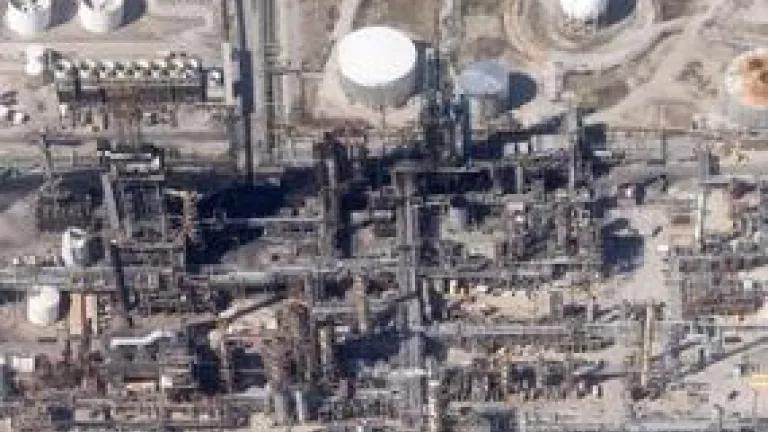
Here they go again. With sad predictability, BP has once again used funny numbers to calculate the emissions from a tar sands conversion project, and once again a state has let them get away with it. And, once again, NRDC and the Environmental Integrity Project are taking them to task for it, in a permit appeal filed last Friday concerning the permit the Ohio Environmental Protection Agency issued for the tar sands expansion at the BP-Husky refinery in Toledo.
You would think that after being socked with a $400 million cleanup settlement after the first time it tried to duck Clean Air Act permitting requirements for a tar sands expansion, at its Whiting, Indiana refinery, BP would have learned its lesson. And I suppose in a way it has – but it’s the wrong lesson. This time around, the cheating is not egregiously obvious, as it was at the Whiting refinery. BP didn’t, as at Whiting, *ahem* forget to include colossal sources of emissions from new flares and other equipment it was constructing.
But it’s up to its same tricks again, just a little more subtly. For example, in the Whiting permit, BP had claimed it was actually reducing its emissions in switching to dirtier crude – yeah, doing us all a favor – by zeroing out its new emissions through elimination of supposedly huge emissions from its existing facility. However, we did a little digging and found that when BP had a few years earlier reported its emissions to the state inventory, a situation where reporting high emissions gets you higher fees, those same emissions had been listed as – you guessed it –vastly smaller. So at BP-Husky, it did the same thing – but this time was ready with some more recent emissions tests it says are more accurate. The problem is, the more recent tests show higher emissions precisely because BP-Husky has in recent years already been ramping up its processing of dirtier tar sands crude, which among other things has up to three times more sulfur than conventional crude.
Which gets to the other problem, which is that BP accomplished its tar sands conversion in multiple stages, permitting one activity at a time so that none of the activities, individually, increase emissions enough to trigger stringent pollution control requirements. There is little that can realistically be done to address that problem in the context of this appeal, but it repeats a pattern that we (and US EPA) observed in the Whiting expansion as well.
We had hoped there would never be a sequel to the first BP tar sands permitting spectacle, but here we are. We can only hope the ending is as good the second time around.

